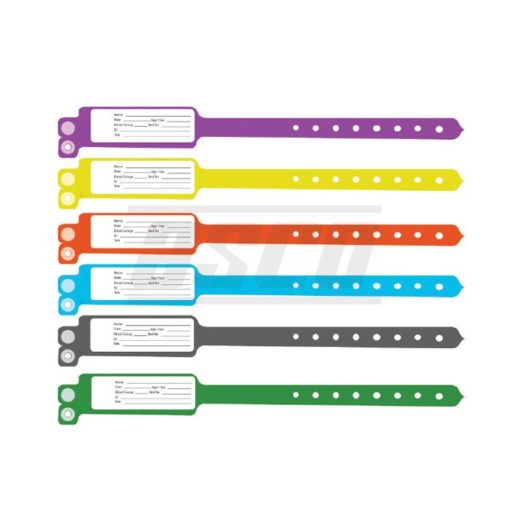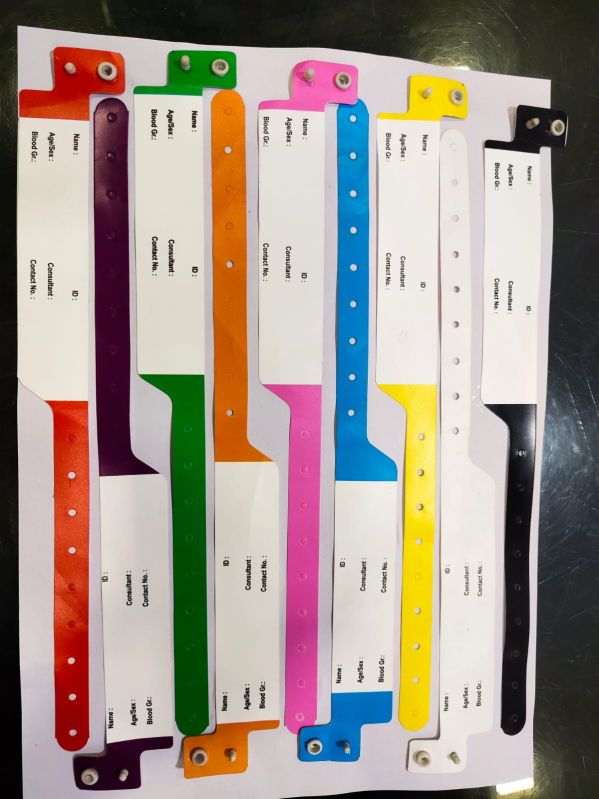Choosing the Right Materials for Your Patient Identification Band: A Step-by-Step Guide
Choosing the Right Materials for Your Patient Identification Band: A Step-by-Step Guide
Blog Article
Discovering the Numerous Types of Patient Identification Band Made Use Of in Clinical Facilities
In the complex globe of medical care, the crucial function of Patient Identification bands frequently goes unnoticed. These bands, varying from basic paper wristbands to advanced RFID bands, form the backbone of Patient safety methods, making sure accuracy in Patient Identification. The substantial variety of these bands, each with its unique advantages and constraints, is often ignored. As we navigate with this subject, one might gain understanding right into the subtle intricacies and important importance of such bands in medical centers.
Comprehending the Value of Patient Identification Bands
While they may appear like plain devices, Patient Identification bands play a crucial function in clinical centers. These bands serve as an essential device for verifying Patient identity, avoiding clinical errors connected to misidentification. Patient Identification bands additionally aid in enhancing administrative jobs, ensuring exact record-keeping and invoicing.
Conventional Paper Wristbands: Their Use and Limitations
Typical paper wristbands have actually been a staple in Patient Identification across different medical facilities. While their usage prevails, they harbor certain restrictions that may affect their effectiveness in Patient administration. This section will concentrate on the range of their application and the fundamental drawbacks connected with their usage.
Paper Wristbands: Use Range
In the world of Patient Identification, paper wristbands have long held a vital function. These bands are usually made use of in outpatient settings, where the Patient's stay is short-lived. The wristbands consist of necessary info such as the Patient's name, date of birth, and an unique Identification number. This simple, yet efficient system, allows physician to rapidly and accurately determine people, guaranteeing the proper therapy is provided. Paper wristbands are likewise utilized in emergency situation circumstances, where rapid Identification is vital. Their usage reaches events like blood contribution drives and mass inoculation programs, better emphasizing their convenience. Despite improvements in modern technology, the simple paper wristband remains a reputable and economical service for Patient Identification in numerous health care situations.
Limitations of Paper Wristbands
Despite their widespread usage, paper wristbands are not without their downsides. Their physical resilience is just one of the substantial limitations. Exposure to water, sweat, or rough handling can make them unreadable or even trigger them to disintegrate. On top of that, paper wristbands frequently do not have the technological capabilities of even more modern-day alternatives, such as barcoding or RFID chips, restricting their functionality to just displaying written info. The failure to update or customize the information on the wristband is another drawback. If the info is transcribed, readability can be jeopardized, leading to prospective misidentification. Paper wristbands can create pain or skin irritation to some individuals, specifically when worn for extended durations.
Barcoded Wristbands: Advancements in Patient Identification
While Patient Identification has actually long been an important facet of health care, the advent of barcoded wristbands represents a considerable jump ahead. These bands take advantage of the simpleness of barcoding modern technology, enabling Patient info to be quickly scanned and accessed. They improve the speed and precision of Patient Identification, minimizing the risk of medical mistakes associated with misidentification. Barcoded wristbands are cost-effective, easy to produce, and remove handwriting errors usual with hand-operated systems. They are not without constraints. While they supply renovations over standard bands, the barcode can come to be worn or smudged, rendering it unreadable. In spite of this, barcoded wristbands remain an important device in contemporary healthcare setups, representing the intersection of technology and Patient treatment.
Superhigh Frequency Identification (RFID) Bands: an Action In The Direction Of Futuristic Healthcare
The evolution of Patient Identification bands has actually caused the appearance of Superhigh frequency Identification (RFID) Bands (patient identification band). These ingenious gadgets existing essential benefits for healthcare facilities, providing a more effective and technologically progressed means of Patient Identification. The application of RFID in health care is a significant action in the direction of a much more advanced technique to Patient management and safety and security
Comprehending RFID Bands

RFID Bands: Trick Advantages
Largely, these bands improve Patient security by supplying exact, instant Identification, therefore lowering medical errors. RFID bands can store a large amount of Patient information, consisting of clinical history and allergic reactions, enabling individualized care. On the whole, RFID bands stand for a considerable improvement in Patient Identification modern technology, profiting both people and health care carriers.
Carrying Out RFID in Health Care
As we enter a technically innovative age, the execution of RFID bands in health care ends up being increasingly vital. These bands supply a smooth way to track and identify clients, ensuring their safety and enhancing efficiency in treatment procedures. RFID bands provide various benefits over conventional Identification methods. They can store a large quantity of information, consisting of the Patient's case history and therapy plans, which can be quickly accessed by doctor. This information assists physicians make notified decisions pertaining to the Patient's treatment plan. Moreover, RFID bands minimize clinical mistakes by supplying accurate Patient Identification, which is essential in preventing misdiagnosis or incorrect medication management. Hence, the implementation of RFID bands is a her comment is here significant action towards improving Patient safety and healthcare distribution.

Color-Coded Wristbands: Aiding in Quick and Accurate Medical Diagnosis
In the busy setting of a clinical center, color-coded wristbands have actually arised as crucial tools for swift and exact Identification of a person's clinical problem. These wristbands, worn by people, lug particular colors that correspond to various medical conditions or standings. This system is developed to use immediate visual cues to medical care suppliers, boosting Patient safety and security and care quality.
Methods for Efficient Application and Administration of Patient ID Bands
Attaining optimum usage of Patient Identification bands necessitates a well-structured approach for their execution and administration. The initial step entails training all wellness personnel on the relevance of properly using and reading these bands. Health centers need to standardize the use of ID bands across all departments, ensuring harmony and decreasing disparities. Normal audits must be conducted to verify adherence to policies and to remedy any type of disparities. Patient education and learning is also critical; people need to understand the purpose of the bands and the requirement for their constant wear. patient identification band. Lastly, it's vital to have a back-up strategy in location, such as barcode scanning or biometrics, to make certain that Patient Identification is never jeopardized.
Conclusion
Patient Identification bands are essential in clinical facilities to guarantee safety and security and accuracy. Standard paper, barcoded, RFID, and color-coded wristbands each hold one-of-a-kind advantages, ranging from cost-effectiveness to innovative data storage space and instant medical notifies. Effective application and monitoring of these bands can significantly lower clinical mistakes, boost performance, and improve overall Patient care. Hence, understanding and making use of these Identification tools is vital for maintaining high standards in medical care.
These bands, differing from simple paper wristbands to sophisticated RFID bands, develop the backbone of Patient security protocols, making sure accuracy in Patient Identification.The advancement of Patient Identification bands has brought regarding the appearance of Radio Regularity Identification discover this info here (RFID) Bands. Overall, RFID bands represent a significant innovation in Patient Identification modern technology, benefiting both patients and healthcare carriers.
RFID bands click here to read minimize clinical errors by offering accurate Patient Identification, which is crucial in preventing misdiagnosis or wrong medication management. Patient education and learning is also important; clients must recognize the function of the bands and the need for their consistent wear.
Report this page